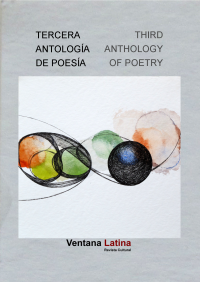The United States of South America
By John Perry
Creating the USSA was the driving ambition of Latin America’s Liberator, Simón Bolívar. According to his biographer Marie Arana, it may well have been in London in 1810, in conversations with Francisco de Miranda in his house in Grafton Way, that he first conceived of a federal power in the southern continent to match that in the north. He spent the subsequent fourteen years in almost continuous armed struggle to bring it about. When the proposal was first formalised, in Lima in 1824, it was a response to the Monroe Doctrine issued twelve months before: the US’s first formal declaration of its hemispheric power. As Arana says, Bolívar believed that the emerging independent states ‘did not need a burly neighbour to protect them’. Bolívar died never fully realising his dream but, in 1826, he did convene the first ever pan-American congress inPanama. Even though the treaty agreed by all the attendees (theUnited States failed to show up) was never ratified, it led to the world’s first regional institution, now the Organisation of American States.
Arana is sceptical about the pretensions of Hugo Chávez, some 170 years later, to have inherited Bolívar’s mantle of pan-Americanism. But the Chávez ‘Bolivarian revolution’ has unquestionably drawn on similar sentiments among Latin Americans as those which excited his predecessor. In Chávez-speak, the invocation of ‘patria’ means much more than ‘fatherland’, and embraces the whole continent. Part of the language of struggle against the imperial power, it casts the United States in the role occupied, for Bolívar, by Spain.
One year after his death, a small part of Chavez’s (and Bolívar’s) dream is being realised. While the Washington-based OAS has never shrugged off the effects of the Monroe doctrine, acquiescing to US power even to the extent of suspending Cuba’s membership in 1962, now there is a purely Latin American alternative. CELAC (the Community of Latin American and Caribbean States), which met last January in Cuba, attended by every American nation except the US and Canada, presided over by Raul Castro and with an opening minute’s silence for Chávez, was a pointed snub to the gringos. If there was irony in its Havana declaration that promoted human rights and citizen participation, it was quickly turned by some Cubans into a challenge to their government to open up more political space. CELAC’s declaration of Latin America as a ‘zone of peace’, free of nuclear weapons, where conflicts will be resolved peacefully and different political systems will be respected, was perhaps the most radical outcome.
As Greg Grandin has pointed out, Latin America’s former ‘new leftists’, Chávez and Lula, one dead and the other at least temporarily out of power, brought about a significant realignment in the continent, drawing US allies such as Colombia, Peru and Mexico into a collective stance which has looked increasingly distinct from Washington’s, at least on matters of defence and foreign policy. But with the ‘constitutional coups’ against leftist governments in Honduras in 2009 and Paraguay in 2012, the one attempted in Ecuador in 2010, and the very narrow election victory by Chávez’s successor Nicolas Maduro in Venezuela last year, it began to look like the left was losing its grip. Yet in the last three months the trend has shifted again. In December, Michele Bachelet regained the Chilean presidency with an ambitious programme to tackle inequality, while Maduro was bolstered by strong municipal election results. Since Christmas, the left has won in El Salvador. Although the right wing took November’s disputed election in Honduras, the new left-wing party LIBRE was a strong contender. In Costa Rica, a mild leftist is ahead after last month’s poll and now faces an April run-off.
There is still no shortage of issues on which Latin American governments can agree. The Snowden revelations of phone tapping in Brazil, the forced landing of Evo Morales’ presidential plane in Austrialast July, and Britain’s encouragement of oil exploration in the South Atlantic, are the latest provocations to receive a united response. However, despite Nick Clegg’s excitement about his visit to Colombia, there are still huge differences in attitudes towards the war on drugs.
An even bigger challenge is the massive gap between rich and poor. Individual countries are tackling this through imaginative anti-poverty programmes such as Brazil’s Bolsa Familia, but the incursion of big international corporations paying near-poverty wages and appropriating land continues largely unchallenged. Honduras extends its palm oil plantations, Colombia and Peru grant massive mining concessions, Nicaragua extends its tax-free zones to attract clothing companies, Ecuador turns its back on conservation and promotes big oil. The Havana declaration hit all the buttons: a more equitable distribution of wealth, sustainable development, protecting the rights of indigenous peoples and much more. But Bolívar dismissed such treaties as mere ‘scraps of paper’. And the day before this one was signed, Raul Castro and Brazil’s Dilma Rousseff jointly opened Cuba’s massive new special economic development zone in the Port ofMariel, aimed at attracting the international corporations that until nowCuba has largely spurned.
* John Perry lives in Nicaragua and writes about Central America, but also writes on issues about housing and migration in the UK. He blogs for the London Review of Books (http://www.lrb.co.uk/blog/author/john-perry/).





 Copyright © 2024
Copyright © 2024